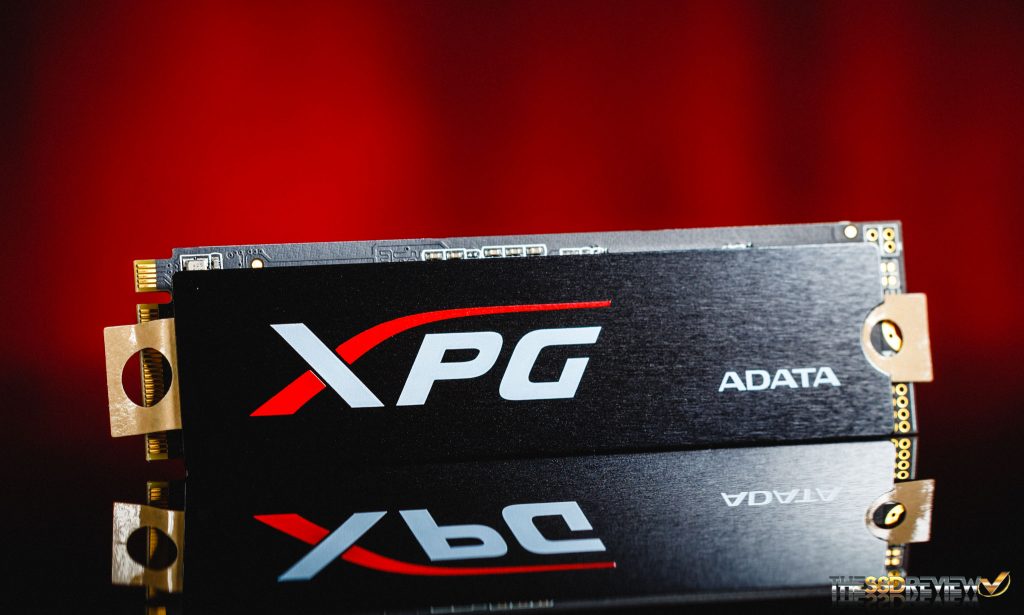Today, we are going to take a look at ADATA’s newest top dog, the XPG SX8200. The XPG SX8200 was built for high demand applications including multimedia editing, gaming, rendering, and ADATA even states overclocking, although we’re not quite sure what benefits this has for overclocking vs other SSDs. This SSD is one of many NVMe M.2 SSDs they make that offer multi-gigabyte speeds to keep you in the fast lane. As a matter of fact, we just took a closer look at the Gammix S10, a value-oriented option a few months ago. While it is marketed towards media professionals as well, we found it wasn’t quite up to the task, but overall, it was more than adequate for most gamers, overclockers, and entry-level media creators.
Unlike the XPG Gammix S10, the XPG SX8200 features a faster SMI 2262 PCIe 3.0 x4 controller and on top of that, it utilizes Micron’s second generation 64-layer 3D TLC NAND, not the slower first gen stuff. With these component updates and the inclusion of a simple, yet sophisticated optional heat spreader, this time around, we’re hoping to see nothing but the best. Can the ADATA XPG SX8200 do what the XPG Gammix S10 couldn’t? Read on to find out.
SPECIFICATIONS, PRICING, AND AVAILABILITY
The ADATA XPG SX8200 is a PCIe 3.0 x4 NVMe SSD that comes in an M.2 2280 form factor. It is currently available in capacities of 240GB ($99.99), 480GB ($189.99), and 960GB (~$400). The XPG SX8200’s sequential performance is rated for speeds of up to 3.2GB/s read and 1.7GB/s write and in terms of random 4K performance, up to 310K/280K IOPS read/write. In addition to this, the endurance figures are also quite respectable with ratings of 160TBW for the 240GB model, 320TBW for the 480GB, and 640TBW for the 960GB. And, in case anything is to ever happen to your drive, the XPG SX8200 comes with a 5yr warranty. Finally, the XPG SX8200’s power consumption is rated at 0.33W active and 0.14W in slumber.
FEATURES
In terms of features, the ADATA XPG SX8200 meets NVM Express version 1.3 compliance, supports TRIM, and supports S.M.A.R.T. It supports LDPC ECC to find and fix any data errors as the drive ages and it has a RAID engine and data shaping algorithms which help to ensure data integrity and stability over the drive’s service life. Also, just as many other TLC based SSDs, the XPG SX8200 has intelligent SLC caching and a DRAM cache buffer to improve write performance as well as 4K random read/write speeds. Sadly, there is no encryption support.
SOFTWARE
With the purchase of the SX8200, you also get access to ADATA’s SSD Toolbox. It hasn’t changed much since its initial release like what we have seen with Samsung Magician, but it is still has a pleasing appearance and the GUI is easy to navigate. With it, you can run a diagnostic test, utilize the optional OS optimizations, monitor the SSDs health and more. As well, you can go to ADATA’s website and get a free to use, stripped down copy of Acronis True Image software to clone your old drive to your new SX8200.
PACKAGING, COMPONENTS, AND MORE
The packaging design matches that of the XPG GAMMIX S10, save for the image of the drive itself on the front of the box. The box itself, however, isn’t quite as high end as the Gammix S10’s which features a magnetic flip-up front cover that allows you to preview the drive within.
Once out of the box we can see the XPG SX8200 features a black PCB. The optional heat spreader is included with it and has some very strong thermal adhesive pre-applied. While it can be stuck onto the drive in any direction, which we think is great because different motherboards have different mounting directions and we wouldn’t like to see an upside-down logo all the time, the paste is applied to the heat spreader in such a way that if you do put it upside down, there won’t be any adhesive touching the DRAM. Still, the heat spreader is optional, so whether or not the DRAM is distributing heat into the spreader super efficiently or not, it shouldn’t really matter. We’re going to mount it in whichever direction it looks best in our system regardless.
For all of you hardware fanatics like us, above we can see a close up of all the components this SSD is made of. Like we mentioned earlier, the XPG SX8200 features an SMI 2262 PCIe 3.0 x4 controller paired with Micron’s second generation 64-layer 3D TLC NAND. The performance from Micron’s latest SATA drives with this NAND have impressed us and so has the SMI 2262 8-channel controller in both the HP EX920 and the Intel SSD 760P we have recently reviewed. Additionally, there is a 512MB NANYA DRAM chip that the controller utilizes for cache space. We think this could be a killer combination that earns ADATA top ranks today, but let’s not get ahead of ourselves here. We got to get on with our testing first in order to see if can do just that.
 The SSD Review The Worlds Dedicated SSD Education and Review Resource |
The SSD Review The Worlds Dedicated SSD Education and Review Resource | 

